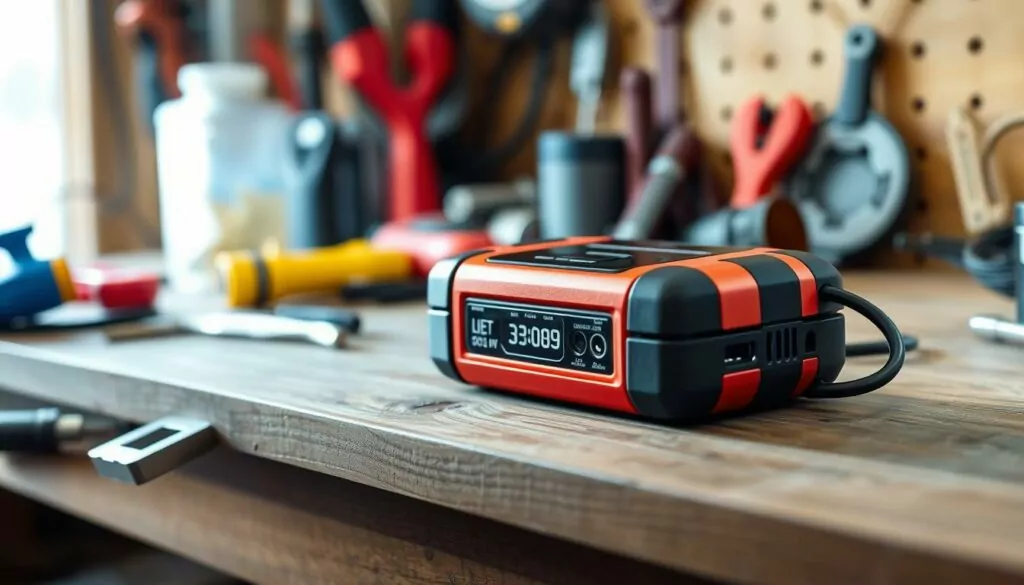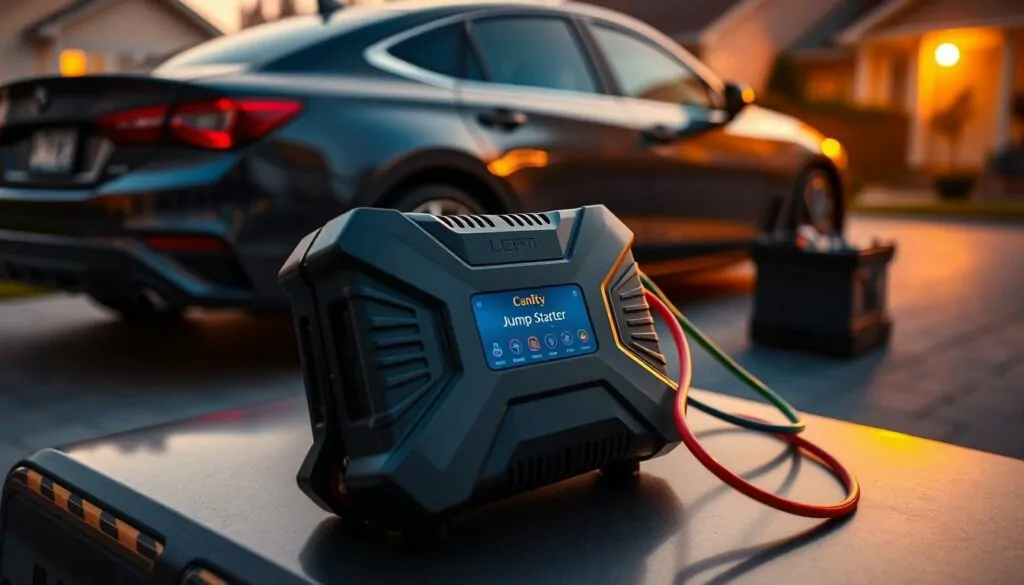Ever been stuck in the middle of nowhere with a car that won’t start? It’s that heart-sinking moment when you turn the key and hear nothing but an empty click. You frantically search your trunk for jumper cables, but come up empty-handed. Then you remember the power bank in your backpack – could this little device that keeps your phone alive also save your car?
I’ve been there myself, and I know that feeling of desperation. Let’s cut through the confusion and find out if that portable charger can actually jump-start your vehicle when you’re in a pinch. I’ll share some real-world advice that could save you from being stranded on your next road trip.
What You Need to Know About Jump Starting
- Regular smartphone power banks typically can’t jump-start cars (sorry to burst that bubble!)
- Special automotive jump starter power banks are specifically designed for this purpose
- Safety is non-negotiable when working with car batteries – one wrong move can be dangerous
- Dedicated portable jump starters offer better reliability than multi-purpose power banks
- Simple maintenance can help you avoid dead battery situations altogether
Jump Starting Basics and Power Bank Technology

When your car battery dies, jump starting provides the electrical boost needed to get your engine turning again. It’s like giving your battery a temporary lifeline until your alternator can take over charging duties.
How Jump Starting Actually Works
Jump starting isn’t complicated – it’s basically a power transfer. Your car’s starter motor needs a big surge of electricity to crank the engine. When your battery can’t deliver that power, connecting to another power source gives it the jolt it needs to come back to life.
Traditionally, this means hooking up to another car’s healthy battery using jumper cables. The good battery essentially “donates” enough power to wake yours up from its dead state.
Power Banks: Not What You Might Think
Your everyday power bank is essentially a portable battery designed for small electronics. Most are built to charge phones and tablets that draw minimal power compared to what a car needs.
Think of it this way – charging your phone is like filling a coffee cup, while jump starting your car is like filling a bathtub. The scale is completely different!
Power Banks vs. Jump Starters: Crucial Differences
- Power capacity: Jump starters pack way more punch than regular power banks – we’re talking hundreds of amps versus just a couple
- Voltage output: Car systems need 12 volts minimum; phone power banks typically deliver just 5 volts
- Safety features: Dedicated jump starters include spark protection, reverse polarity alerts, and other vital safeguards
Here’s a quick comparison that shows why your phone charger probably won’t save your car:
| Feature | Power Bank | Jump Starter |
|---|---|---|
| Capacity | Lower | Higher |
| Electrical Output | Steady, low amperage | High-amperage surge |
| Safety Features | Limited | Comprehensive |
The Truth About Using Power Banks for Your Car

I hate to be the bearer of bad news, but that regular power bank in your bag isn’t going to bring your car back to life. Let’s explore why – and what actually might work instead.
Why Regular Power Banks Fall Short
Your standard power bank just wasn’t built for jump starting. These devices typically output around 5 volts and 1-2 amps – barely a trickle compared to what your car needs. Your starter motor requires a massive surge of power – sometimes hundreds of amps – to turn over the engine.
Trying to use a regular power bank for this job is like trying to fill a swimming pool with a drinking straw. It’s just not physically possible, no matter how much you might wish it were!
Specialized Automotive Power Banks That Can Help
- Jump starter power banks: These look similar to regular power banks but deliver 300-1000 peak amps – enough to start most vehicles
- Battery boosters: Larger portable units with built-in jumper cables that make connecting to your battery terminals easy and safe
I learned this distinction the hard way when my SUV died in a remote camping area. My phone power bank was useless, but a fellow camper had a small jump starter that fired up my engine in seconds. After that experience, I immediately bought my own!
Safety First: This Is Serious Business
Car batteries contain sulfuric acid and can release hydrogen gas – a potentially explosive combination when handled incorrectly. If you’re using any device to jump-start your vehicle, these safety precautions aren’t optional:
| Safety Tips for Jump Starting with a Power Bank |
|---|
|
The bottom line? Skip using regular power banks for jump starting. They’re not up to the task and could damage your electronics or even cause injury. Instead, invest in a proper jump starter – they’re more affordable than you might think, and you’ll thank yourself the next time you hear that dreaded clicking sound.
Better Options for Roadside Battery Emergencies
When your battery lets you down, you’ve got several options beyond hoping your phone power bank might work. Let’s explore some better solutions that’ll actually get you back on the road.
Old-School But Effective: Traditional Jumper Cables
Good old jumper cables remain one of the most reliable methods for jump starting. They’re affordable (usually $20-30 for a decent set) and never run out of charge. The downside? You’ll need another vehicle and a helpful driver to make them work.
I keep a set in my trunk despite having other options – they’ve saved me more than once when other methods failed. Just make sure to brush up on proper connection procedures before you need them!
Portable Jump Starters: Your Personal Rescue Device
Modern portable jump starters are game-changers for roadside emergencies. These compact devices pack enough power to start most vehicles multiple times on a single charge. The best ones include:
- Enough peak amps to start V8 engines (400-1000A)
- Built-in safety features like reverse polarity protection
- Multi-function capabilities like USB charging, emergency lighting, and even air compressors
- Compact designs that fit in your glove box
After being stranded three times in one particularly brutal winter, I invested in a lithium jump starter. It’s started my car reliably even in -20°F weather, and I’ve become the neighborhood hero by helping others with dead batteries!
Preventing Battery Troubles Before They Start
The best roadside emergency is the one you never have. Taking care of your battery can save you tons of headache:
- Get your battery tested before extreme weather seasons hit
- Keep terminals clean – that crusty white stuff prevents good connections
- Consider a trickle charger for vehicles that sit unused for weeks at a time
- Turn off all electronics before shutting down your engine
- Replace your battery preventatively every 3-5 years
I’ve made it a habit to check my battery connections whenever I change my oil. This simple routine maintenance has caught several potential issues before they left me stranded somewhere inconvenient!
Remember, preparation is your best defense against roadside emergencies. While your phone power bank won’t jump-start your car, a dedicated automotive jump starter is a worthwhile investment that takes up little space but delivers peace of mind you can’t put a price on.
